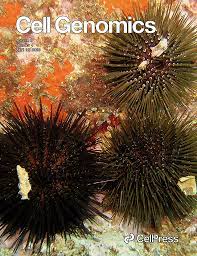Cell Genom. 2023 Apr 5;3(4):100295. doi: 10.1016/j.xgen.2023.100295
Analysis of the P. lividus sea urchin genome highlights contrasting trends of genomic and regulatory evolution in deuterostomes
Ferdinand Marlétaz, Arnaud Couloux, Julie Poulain, Karine Labadie, Corinne Da Silva, Sophie Mangenot, Benjamin Noel, Albert J Poustka, Philippe Dru, Cinta Pegueroles, Marco Borra, Elijah K Lowe, Guy Lhomond, Lydia Besnardeau, Stéphanie Le Gras, Tao Ye, Daria Gavriouchkina, Roberta Russo, Caterina Costa, Francesca Zito, Letizia Anello, Aldo Nicosia, Maria Antonietta Ragusa, Marta Pascual, M Dolores Molina, Aline Chessel, Marta Di Carlo, Xavier Turon, Richard R Copley, Jean-Yves Exposito, Pedro Martinez, Vincenzo Cavalieri, Smadar Ben Tabou de Leon, Jenifer Croce, Paola Oliveri, Valeria Matranga, Maria Di Bernardo, Julia Morales, Patrick Cormier, Anne-Marie Geneviève, Jean Marc Aury, Valérie Barbe, Patrick Wincker, Maria Ina Arnone, Christian Gache, Thierry Lepage
Abstract
Sea urchins are emblematic models in developmental biology and display several characteristics that set them apart from other deuterostomes. To uncover the genomic cues that may underlie these specificities, we generated a chromosome-scale genome assembly for the sea urchin Paracentrotus lividus and an extensive gene expression and epigenetic profiles of its embryonic development. We found that, unlike vertebrates, sea urchins retained ancestral chromosomal linkages but underwent very fast intrachromosomal gene order mixing. We identified a burst of gene duplication in the echinoid lineage and showed that some of these expanded genes have been recruited in novel structures (water vascular system, Aristotle’s lantern, and skeletogenic micromere lineage). Finally, we identified gene-regulatory modules conserved between sea urchins and chordates. Our results suggest that gene-regulatory networks controlling development can be conserved despite extensive gene order rearrangement.
DOI: 10.1016/j.xgen.2023.100295

